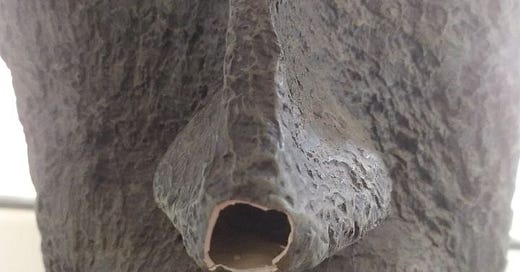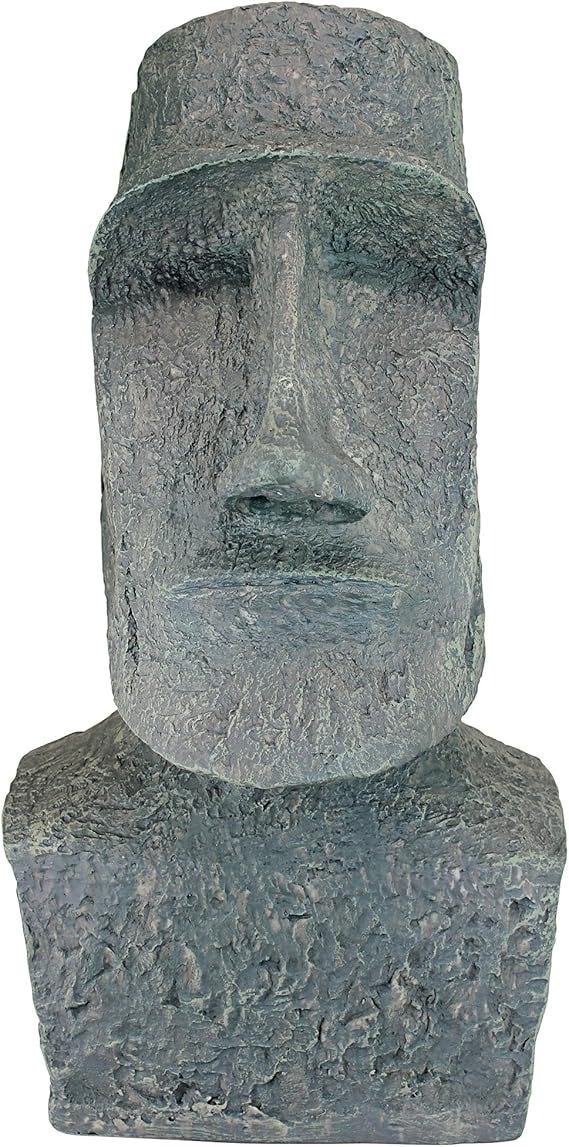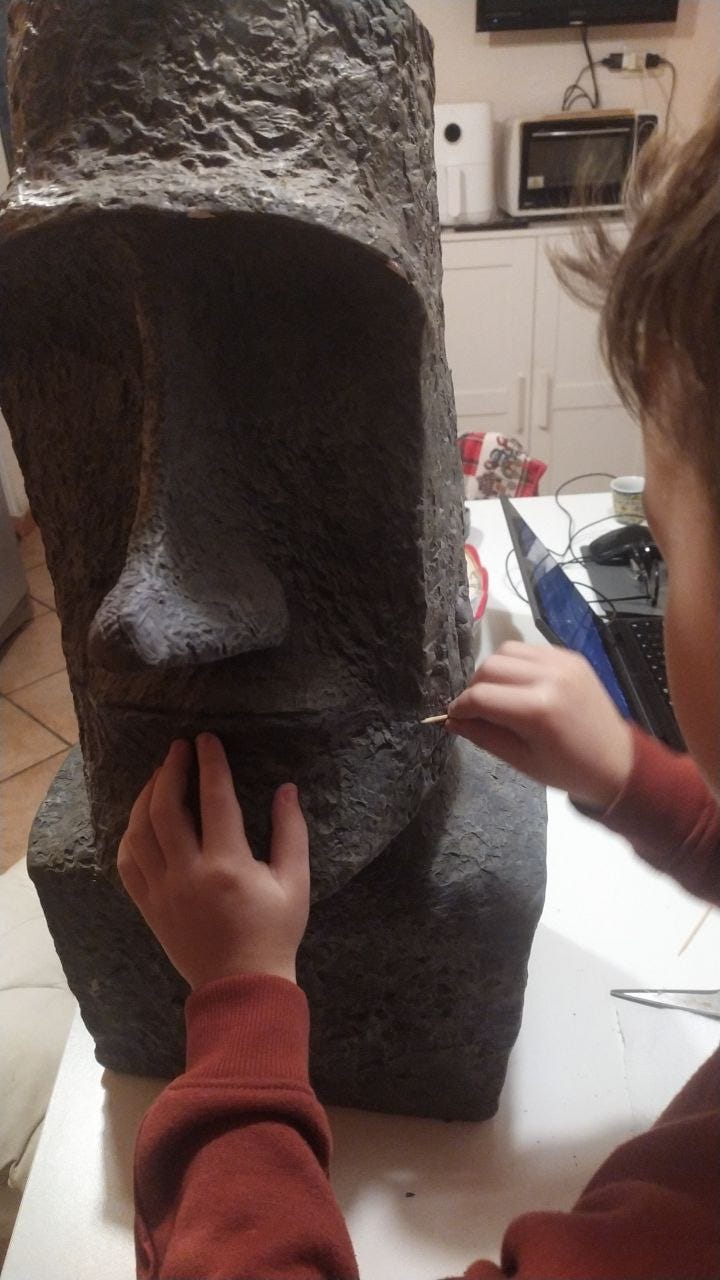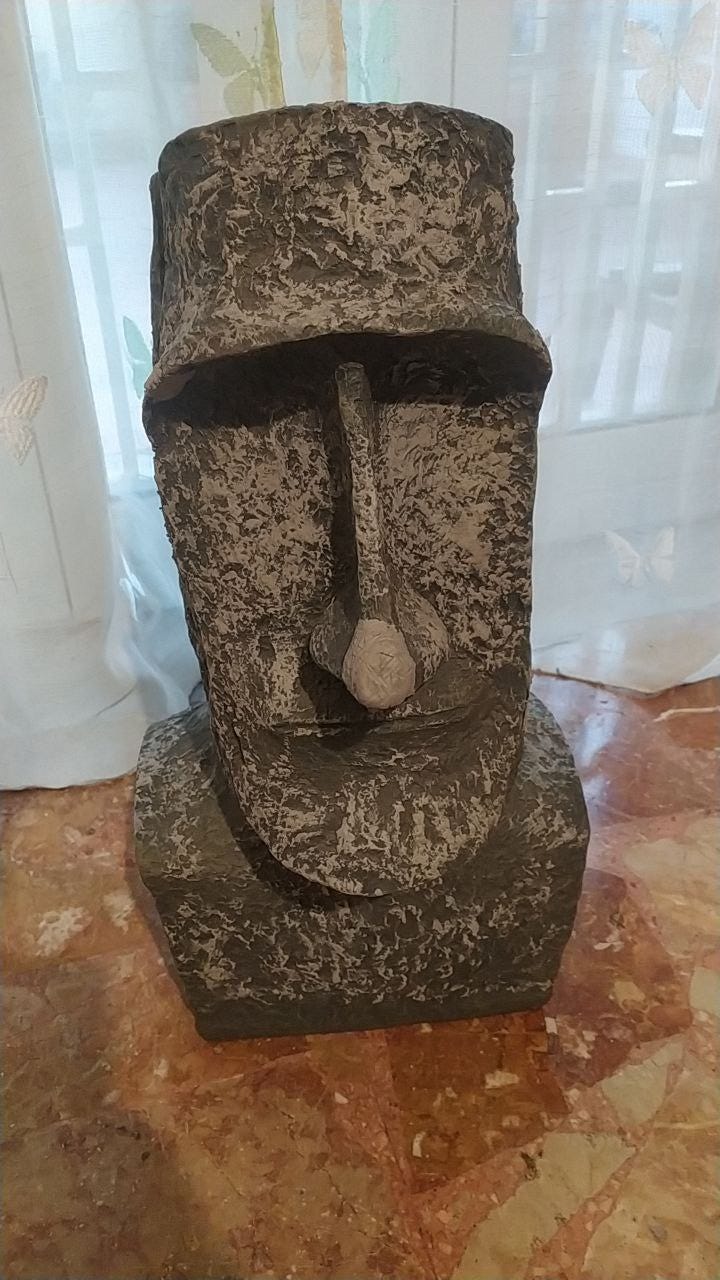Ancient sculpture and its millennial stories have always fascinated me. In my home, I lovingly keep a reproduction of a Moai, which I received at a special moment in my professional life.
An interview
It was 2021 when for the web magazine Crono.news, I had the opportunity to conduct a truly unique interview for our program "Wonderful Ideas." Our guest was Terry Hunt, an anthropologist who has dedicated four decades of his life to studying the Pacific islands, revolutionizing our understanding of Easter Island. His book "The Statues That Walked," awarded Book of the Year by the Society for American Archaeology, completely rewrote the history of Rapa Nui.
In 20 years of research on the island, Hunt and his students debunked the myth of the collapse of Easter Island civilization, earning extraordinary recognition, including a National Geographic cover and a PBS documentary. During our online conversation, Hunt revealed a surprising truth: the Moai were not witnesses to a self-destructive civilization, but symbols of ingenuity and collaboration. At the end of that memorable interview, I received a Design Toscano reproduction of those mysterious statues as a gift.
My interview with Terry Hunt in Italian and English
My nephew
A couple of days ago, my nephew Vincenzo was playing in my room when, in a moment of distraction, he broke Moai's nose. Despite the initial disappointment, I immediately had the idea to transform this incident into an opportunity for creative repair with him. Perhaps in the antechamber of my brain, the concept of Japanese Kintsugi, the art of repairing broken objects by transforming them into something even more beautiful, echoed.
Armed with DAS modelling clay yesterday, Vincenzo and I didn't just repair the Moai's nose. Still, we created something extraordinary: working on the surface, we created shades that transformed the original dark grey into something that surprisingly resembled ancient stone, giving the statue an almost authentic appearance. There's something poetic about this coincidence with Hunt's discoveries. Like the original Moai that "walked" through an ingenious system of ropes and community effort, our statue too has undertaken an unexpected journey. From a simple decorative object, it has become a unique piece that tells a deeper story - of spontaneous creativity, of bonds between generations, and of how unexpected events can open doors to unimagined possibilities.
And…so?
Looking at the Moai in my home now, I think about how the objects surrounding us are never just "things." Through our hands, our gestures, and our shared stories, they transform into living witnesses of our experiences. In those now transformed imperfections of my Moai, I no longer see a simple attempt at restoration, but the tangible traces of a special afternoon with my nephew, the memory of a shared laugh, and the joy of shared discovery. This is how objects acquire a soul: not for what they are, but for the moments of life we preserve in them.
Feel free to leave a comment.
I have woven tales for anyone who cares to read them. My books await you on Google Books. You can also check out my stories on Medium.com.
I am eager to participate in research and produce content on Cross-Cultural Philosophy. Considering the many philosophy professors following Learn Vedanta Substack from universities across the five continents, I would be truly honoured to be involved in projects, as I have been recently approached. Please feel free to contact me.
I would be honoured if you considered subscribing to the Premium Contents of my Vedanta Substack and leaving feedback, comments, and suggestions on this page and by writing to me at cosmicdancerpodcast@gmail.com.







